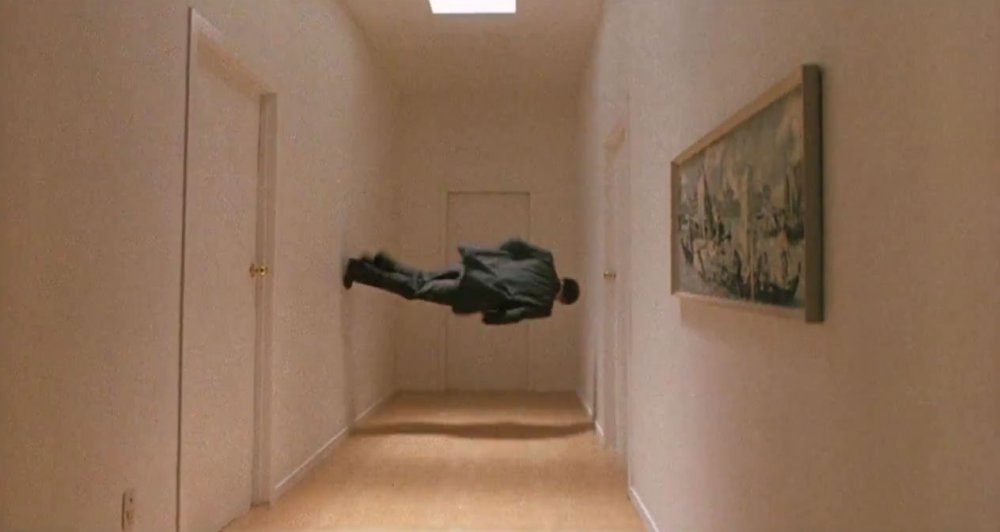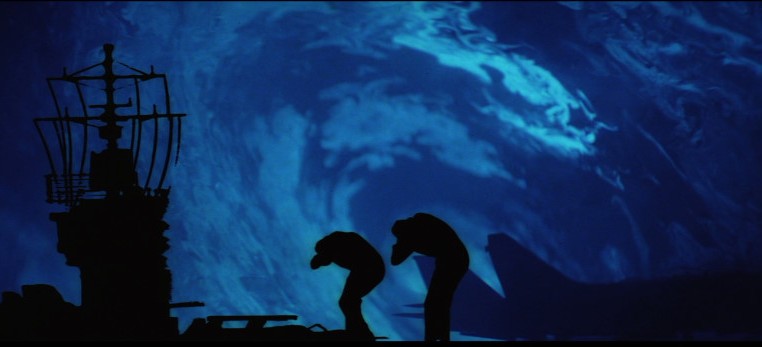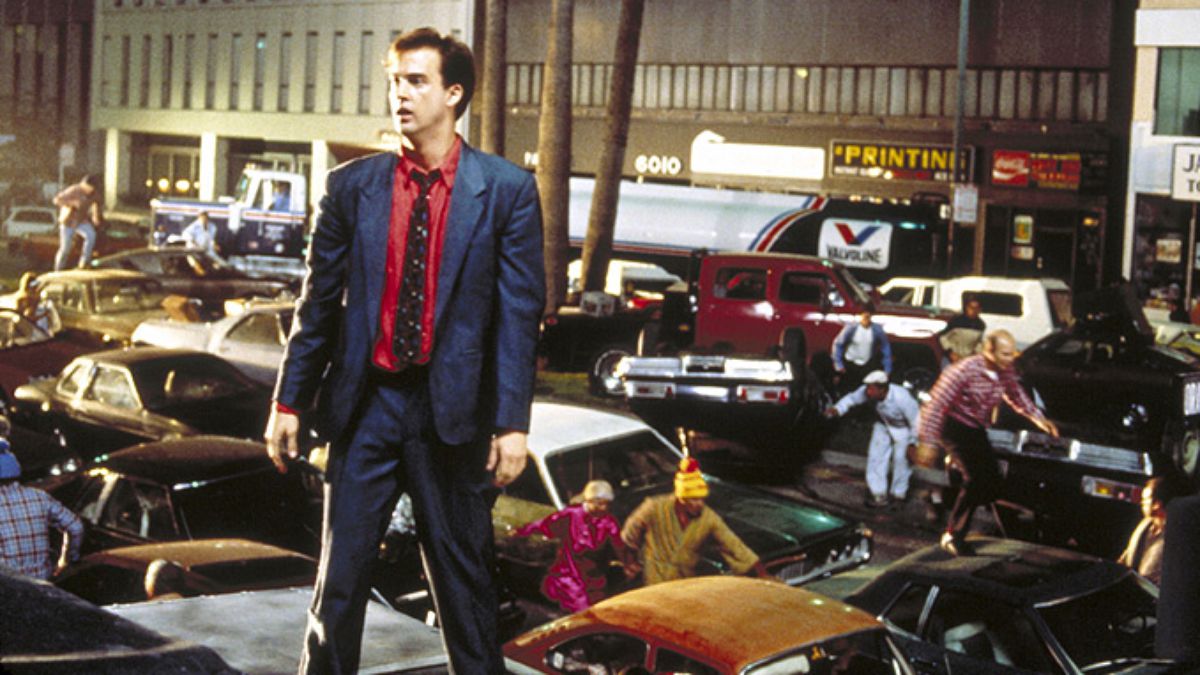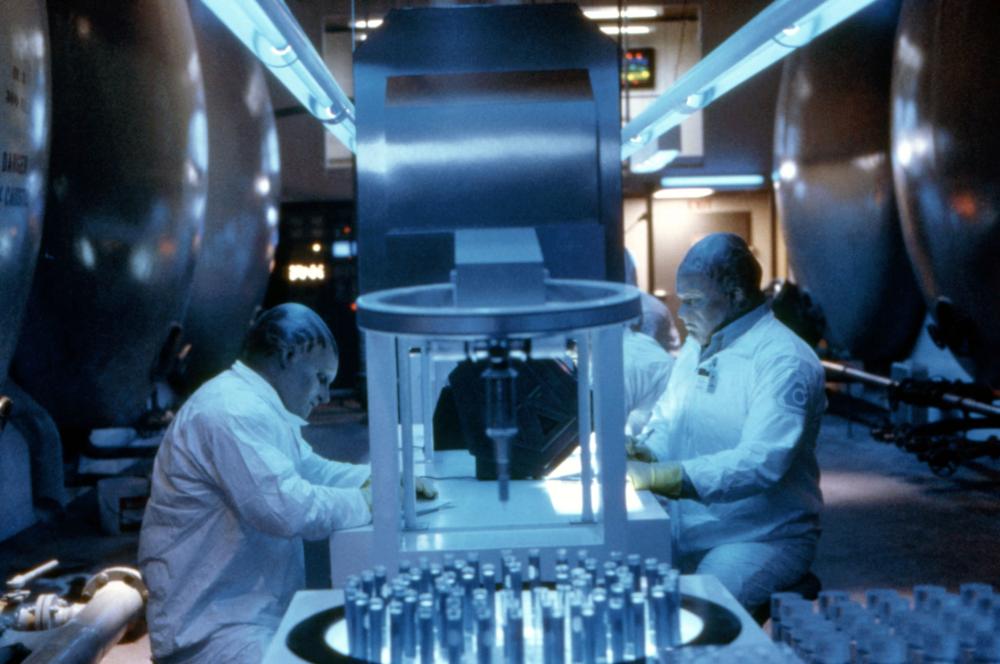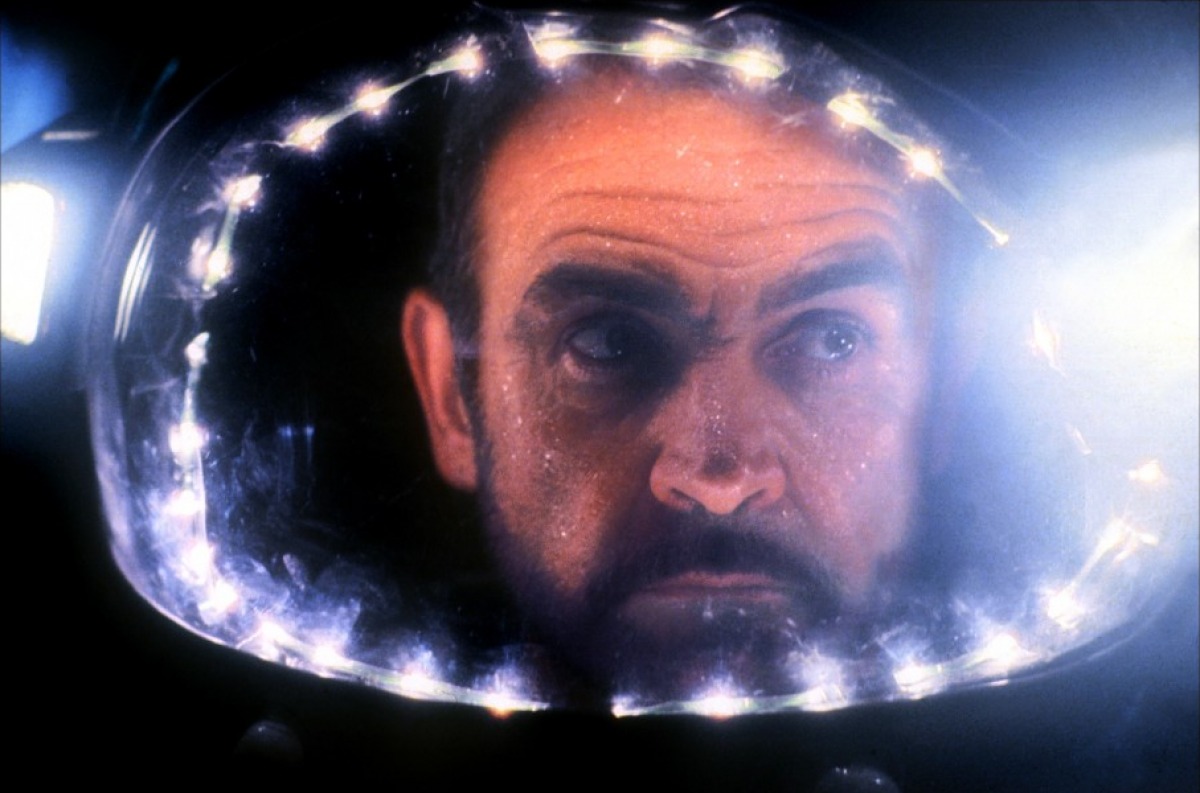5. The Quiet Earth (1985)
In this unusual New Zealand film, scientist Zac Hobson (Bruno Lawrence, in bravura performance) wakes up one day to find everyone else is gone. No bodies, no indication of a worldwide disaster…they’ve all simply vanished. Worse yet, the product of his own research, Project Flashlight, may be responsible.
The first act of this film, where Zac wanders the city alone, is fascinating. We see the psychological impact that complete solitude has on him, which is both amusing and depressing (he briefly contemplates suicide). Complications arise when two others eventually turn up. How these three managed to survive this global cataclysm is eventually revealed, which more-or-less makes sense within the parameters of the story.
The apocalyptic effects of Project Flashlight may not yet be over, however, leading to a final act and climax which is wonderfully ambiguous (or extraordinarily frustrating, depending on the viewer).
Virtually ignored in the U.S. at the time, this is intelligent, challenging sci-fi that may not appeal to the masses weened on spectacles like Star Wars, since it isn’t what anyone would define as a ‘fun’ film. Its unique and discussion-worthy premise is the kind of thing sci-fi cult films are made of, making it shame The Quiet Earth never found the fringe audience it deserves.
4. The Final Countdown (1980)
If you had the opportunity to go back in time and alter history, would you? That’s the essential question raised by The Final Countdown, a modestly-budgeted thriller which supposes what might happen if a freak storm sends a modern day aircraft carrier (the U.S.S. Nimitz) back in time to the eve of the Japanese attack on Pearl Harbor.
Led by Kirk Douglas at the end of his leading man career, the crew debate the ramifications of messing around with the timeline by intervening in historical events, while still committed to the oath they’ve sworn to uphold…protecting the United States at all costs, regardless of the circumstances. Since the performances (by an admittedly impressive cast) are merely serviceable and the visual effects were silly looking even in the 80s, this intriguing quandary becomes the crux of the entire film.
The consequences of time travel aren’t as ingeniously explored as in the Back to the Future trilogy or 12 Monkeys. But despite a few lapses in logic, The Final Countdown offers an intriguing premise with a nifty twist ending which suits the story well. The film is given considerable emotional heft by a wonderful – and criminally undervalued – music score by John Scott.
3. Miracle Mile (1988)
Miracle Mile is one of the most obscenely overlooked films of the 1980s. Part sci-fi thriller, part love story, part disaster film – even part-L.A. travelogue – the film presents an apocalyptic ‘what if’ scenario that seemed all-too-plausible during the cold war era.
Anthony Edwards plays a lovesick rube who answers a restaurant pay phone, hoping it’s the girl he just met. Instead, it’s a frantic voice trying to contact his father to tell him nuclear war between the U.S. and the Russians is imminent. In fact, World War III is a little over an hour away. After some amusing debate among the patrons and staff of the diner, Edwards ventures out to find his love before the missiles finally strike, meeting all sorts of eccentric characters along the way.
This is a small-scale film, presented in real time, with massive implications. Despite the various L.A. locales, it remains surprisingly intimate, relying on the story and its characters to convey the apocalyptic enormity of the situation. The performances are exemplary and the plot manages to create suspense even after the outcome is inevitable.
Ultimately a mash-up of The Day After and James Cameron’s Titanic, Miracle Mile is an emotionally riveting film that, despite overwhelming critical praise, never found an audience during its initial release. Perhaps part of that was due to its somber subject matter, or maybe its studio simply had no idea how to market it. At any rate, the film is as potent today as it was 25 years ago.
2. Alien Nation (1988)
Lethal Weapon…with aliens. That’s the best way to describe this amusing spin on the cop buddy formula. Alien Nation takes place in modern day Los Angeles, a few years after a massive shipload of alien slaves have sought refuge on Earth. Though they’ve since become an everyday part of society, holding jobs and adapting to a life of freedom, not everyone has welcomed them with open arms, such as hard-nosed cop Matthew Sykes (James Caan).
After his partner is killed by one of these ‘slags’ (a derogatory term for alien newcomers), Sykes insists on partnering up with another one, Sam Francisco, who’s recently been promoted to detective (Mandy Patinkin), thinking it’ll give him an advantage in finding the killer. What the two uncover instead is an underground criminal operation involving drugs and a dark secret Francisco fears will threaten his entire race.
The plot is your standard cop story, but what makes Alien Nation unique (and sometimes quite funny) is its not-so-subtle commentary on immigration and racism. Since both issues are current hot-button topics, both politically and socially, perhaps the film is even more relevant now than it was back in 1988.
The alien make-up is fairly unimaginative and generic, but Alien Nation is driven more by its analogy and performances than special effects. Speaking of the latter, Caan hasn’t been this fun in a film since The Godfather, while Patinkin approaches his role with a childlike quality that’s both charming and, given the premise, believable.
A moderate hit, Alien Nation inspired a television show, eight novels and several comic book series, all of which ironically developed a larger cult of fans than the original film. Still, the film itself has faded into relative obscurity, which is ironic considering its themes are arguably more timely than most sci-fi films of the era.
1. Outland (1981)
Sean Connery plays O’Niel, the newly-appointed marshal of a titanium mining colony on Io, one of Jupiter’s moons. Things are going okay until several miners begin going insane and killing themselves. At first everyone writes it off as cabin fever, but upon further investigation, O’Niel discovers the victims were all addicted to a synthetic amphetamine which makes them a lot more productive, but eventually fries their brains.
Worse yet, this stuff is being brought in by Mark Sheppard (Peter Boyle), the colony manager who wants to keep production high. Since O’Niel won’t take a pay-off to look the other way, Sheppard hires assassins to come to Io and finish him off, leading to a pretty exciting showdown which comprises the final act.
Outland is an underrated gem released in the wake of Star Wars, promoted to capitalize on the success of Alien and presented as High Noon in space. It isn’t the most original thing ever made, like most movies directed by Peter Hyams. But it’s fun, fast-paced junk food with great visual effects and suitably grimy production design. It also features a terrifically understated performance by Sean Connery during a period just before The Untouchables made him respectable again.
Author Bio: D.M. Anderson lives, works and writes in Portland, Oregon. A lifelong film fanatic, he has written articles for WhatCulture.com, MoviePilot and is contributing to an upcoming book about animal attack movies. His blog, Free Kittens Movie Guide, chronicles his ongoing adventures of life in the dark.
